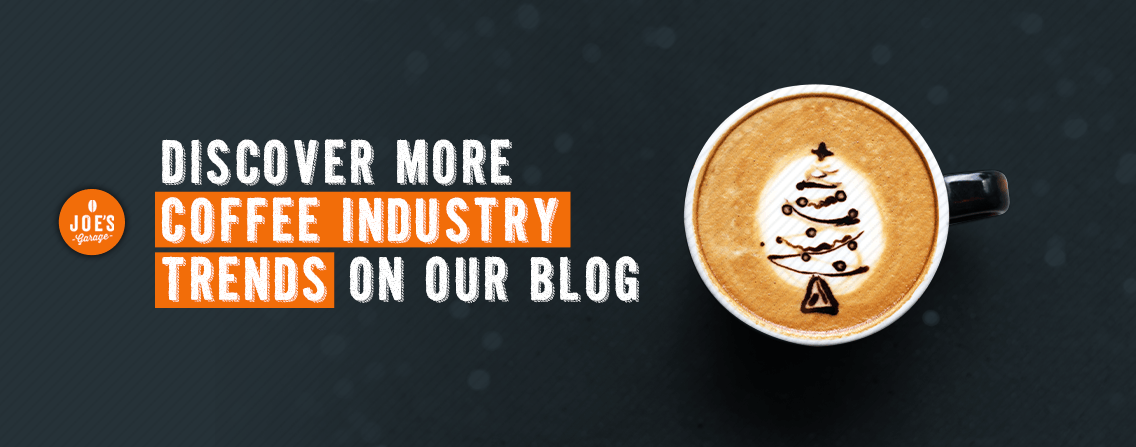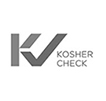2023 Coffee Trends & The Future of the Coffee Industry

The coffee industry is continuously evolving. Coffee lovers and manufacturers are always coming up with innovative ways to consume and sell this beloved beverage. With new trends arising every year, it can be tough to keep track of everything.
Keeping a finger on the industry’s pulse can help you figure out which trends to follow. And offering those trends or products for your customers can help build your customer base. You could even partake in trends to boost your company’s social media presence and engagement, showing followers you know what they’re into. We’ve outlined some of the hottest coffee trends to keep an eye on this year and beyond.
Table of Contents
- Cold Brew
- Nitro Cold Brews
- Matcha Lattes
- Ready-to-Drink Coffee
- Plant-Based, Non-Dairy Milks
- Snapchilled Coffee
- At-Home Coffee Trends
- Healthy Coffee Trends
- Dalgona or Whipped Coffee
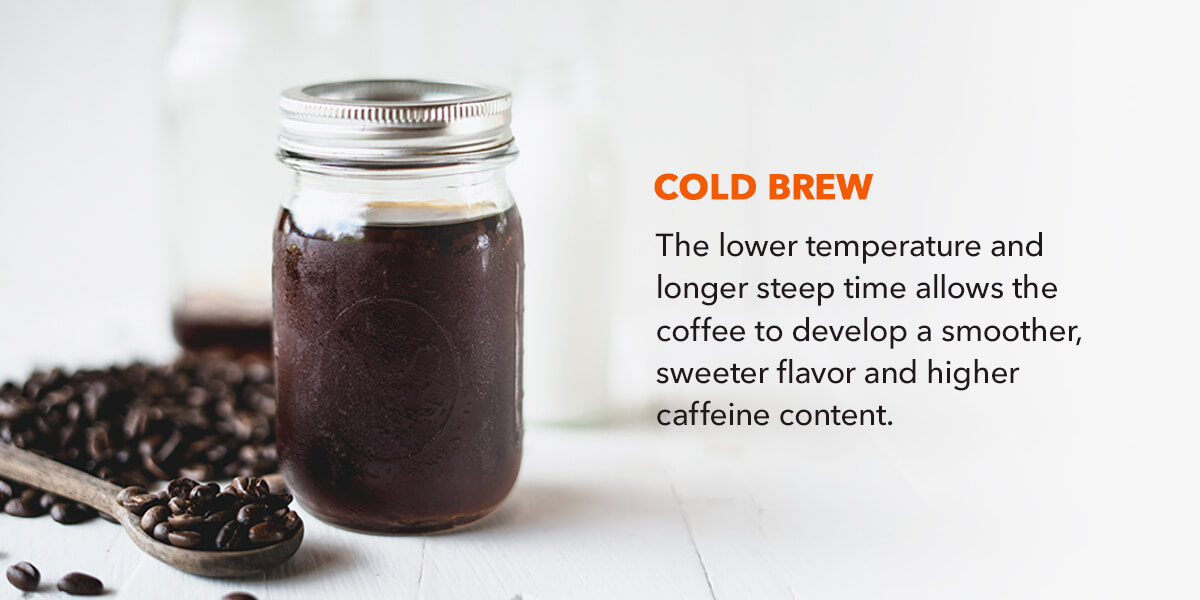
1. Cold Brew
While cold brew has been on the scene for several years now, this trendy coffee’s popularity has only continued to grow. Market forecasts predict a $1.37 billion expansion from 2020 to 2025, with North America driving most of the demand.
It’s important to note that although the two are similar, cold brew is different from iced coffee. Iced coffee is brewed hot and chilled over ice, while cold brew is left to steep in cold water for anywhere from 12 to 24 hours. The lower temperature and longer steep time allows the coffee to develop a smoother, sweeter flavor and higher caffeine content.
Offering cold brew options could significantly expand your revenue stream. If you still need to jump on the cold brew train, here are a few ideas:
- Pitcher packs. Cold brew pitcher packs allow for easy at-home or commercial brewing. All the user has to do is add your coffee to a pitcher and let it steep overnight.
- Cold brew concentrate. Prepackaged cold brew concentrate is ultra-convenient for customers. They simply mix the concentrate with water or milk before drinking.
- Reusable filters. Take advantage of sustainability trends by offering a reusable metal or plastic filter for at-home brewers. They can fill the filter with their favorite blend and leave it overnight, giving them total control over their coffee.
Why Is Cold Brew Popular?
Unlike iced coffee, which often tastes weak and watery, cold brew has a bold, robust flavor. It also contains more caffeine than iced coffee, an added bonus.
It’s also just as versatile as traditional iced coffee. Coffee drinkers can customize cold brew by adding flavored syrups, milks, and creamers, or blend it into a frozen coffee treat. Cocktails and craft alcoholic beverages containing cold brew have also been appearing on menus at bars and restaurants.
2. Nitro Cold Brews
Nitro cold brew takes this chilled beverage to a whole new level. While it’s been around for a few years, this trend is likely to become even more popular moving forward.
Nitro cold brewing uses a pressurized valve to infuse nitrogen gas into the coffee, a process similar to that of home-brewing beer. The process begins with regular cold brew. Using a pressurized valve, brewers add nitrogen gas, which creates small bubbles that improve the coffee’s flavor and texture. These bubbles are smaller than what you’d find in most soft drinks, which is why nitro cold brew doesn’t taste fizzy or carbonated.
If you want to begin offering nitro cold brew, make sure to start with quality coffee beans — and remember to use the right equipment. Although it’s more costly to prepare than traditional coffee, interested customers are willing to pay more for it. The typical nitro cold brew costs a dollar or more than a standard iced coffee.
Why Are Nitro Cold Brews Popular?
On their own, nitro cold brew canned drinks often have no sugar or less than what other coffee beverages have. That gives them a health appeal of fewer calories compared to different beverages. Nitro coffee is also among coffee trends because of how it tastes, with qualities including:
- Less bitter flavor
- Smoother texture
- Creamier flavor
Coffee lovers and younger coffee drinkers alike love those qualities, meaning nitro coffee is popular across different groups of customers.
3. Matcha Lattes
You might have noticed this green beverage among upcoming coffee shop trends. While a coffee latte has espresso, steamed milk, and foam, a matcha latte combines green tea powder, water, and milk. The beverage doesn’t deliver quite as much caffeine as its coffee counterpart, but some consider it to provide a cleaner caffeine boost than coffee.
Matcha has been around for more than a thousand years, but matcha lattes have only become popular in recent years. They are expected to rise among other coffee trends this year. The beverage starts with matcha powder, which is made from ground leaves of certain green tea plants. A barista blends that powder with water to create a paste. They then add steamed milk, and can even create latte art as they would on a traditional coffee version.
Matcha powder can come sweetened or unsweetened. For unsweetened varieties, a barista can add sweetener or honey to the latte based on the customer’s preference. They’ll also base the type of milk and how much they use on what a customer wants.
Why Are Matcha Lattes Popular?
The main reason matcha lattes are among the top 2022 coffee trends despite lacking coffee is their potential health benefits. Many coffee drinkers have an increasingly health-conscious mindset, and green tea provides different possible health benefits. More customers are choosing matcha lattes because they:
- Contain antioxidants
- Contain fiber
- Are a good source of vitamin C and other vitamins
Those attributes mean matcha and matcha lattes can reduce bad cholesterol, protect the liver, improve brain function, and provide other benefits.
4. Ready-to-Drink Coffee
Ready-to-drink (RTD) coffee encapsulates various coffee industry trends. RTD beverages are any type of drink that would normally involve mixing or preparation, like coffee. Manufacturers pre-prepare these drinks. RTD coffee is canned or bottled, already brewed, flavored, and sweetened.
Coffee-infused energy drinks are one such example. They’re popular because they provide the bold, sweet taste of coffee with the high caffeine kick of energy drinks like Monster or Red Bull.
These ready-to-drink beverages appear anywhere from grocery store check-outs to convenience stores and even coffee shop refrigerators. All the customer has to do is pick their favorite variety and enjoy.
Emerging coffee brands and large manufacturers alike are entering the RTD market. As of May 2022, RTD coffee sales reached $925.4 million in the U.S. — that’s a 31.5% increase year-over-year. Jumping on the RTD trend is a sure way to generate revenue over the coming years.
Why Is Ready-to-Drink Coffee Popular?
RTD coffee is a popular grab-and-go option. Its biggest appeal is its convenience, since customers don’t have to brew their own coffee or wait in lines at a coffee shop for a barista to prepare their drink. Instead, all they have to do is pick what brand and flavor they want. Because RTD coffees are refrigerated, they also fall into the increasingly trendy category of cold coffee drinks.
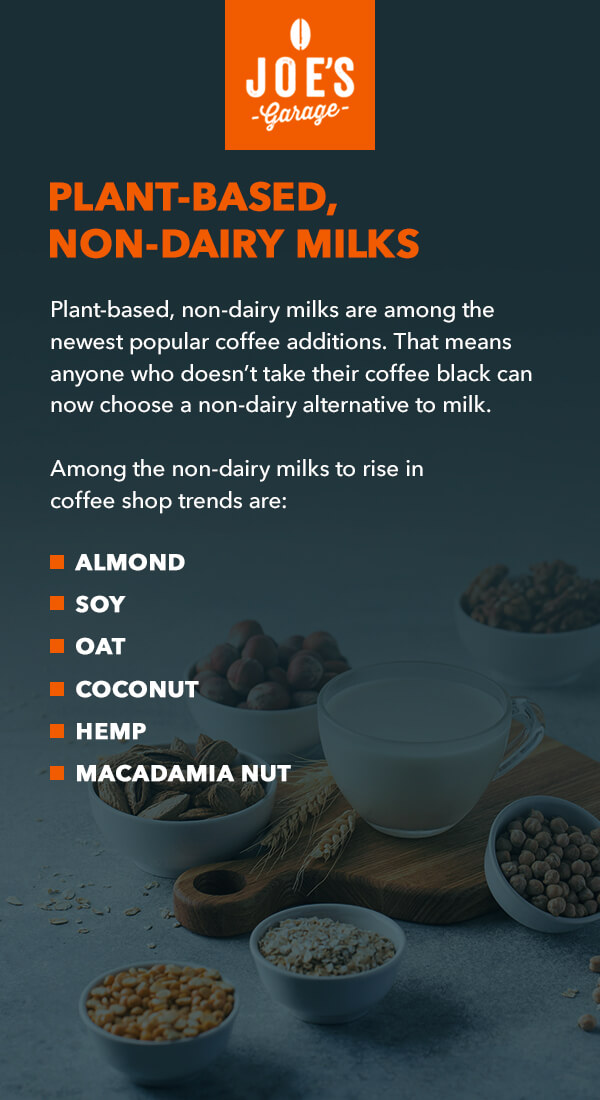
5. Plant-Based, Non-Dairy Milks
If you have been to a coffee shop lately, you may have noticed more milk options than the usual skim or whole. Plant-based, non-dairy milks are among the newest popular coffee additions. That means anyone who doesn’t take their coffee black can now choose a non-dairy alternative to milk. And coffee drinkers have certainly been taking advantage of these alternatives.
In 2020, the market size value for non-dairy milks in general was 18.81 billion U.S. dollars. This is expected to expand to 41.06 billion U.S. dollars by 2025, showing the non-dairy milk trend is here to stay. Trends for the non-dairy milk market translate to the coffee industry, with large and local coffee shops offering various plant-based milk options. Among the non-dairy milks to rise in coffee shop trends are:
- Almond
- Soy
- Oat
- Coconut
- Hemp
- Macadamia nut
Why Are Non-Dairy Milks Popular?
Lactose intolerance and veganism have received more attention with the use of social media, and customers’ desire for non-dairy options have become louder. Providing an alternative to cow’s milk allows those with dietary restrictions, such as individuals with lactose intolerance or allergies and those who don’t consume animal byproducts, to add more flavor to their coffee.
Some non-dairy milks are more flavorful than regular milk or cream. They can come sweetened and flavored, providing new options for coffee creamers and syrups. Coffee shops should consider expanding their offerings to include dairy alternatives to take advantage of this trend.
6. Snapchilled™ Coffee
Snapchilled Coffee is a trendy response to cold brew, nitro coffee, and iced coffee. This product takes freshly brewed hot coffee, “snapchills” it, and cans it. You’ve likely seen premade coffee drinks in bottles and cans, so what makes this such a popular coffee? The snapchilling process preserves freshness and flavor in a way other bottling and canning processes can’t. Here’s how and why it works:
- The coffee is brewed hot. Hot water helps Snapchilled Coffee manufacturers extract all the right flavors for an authentic brewed coffee taste. The result is a can of coffee that tastes freshly brewed.
- The coffee is chilled immediately. Other coffee chilling processes take hours. Freezing, refrigerating, or adding ice can ruin the coffee’s flavor. When Snapchilled Coffee manufacturers chill the coffee immediately, they lose less flavor.
- The coffee is canned undiluted. When you have iced coffee, the ice eventually melts, diluting the beverage and ruining the flavor. Snapchilled Coffee is brewed to the right strength, so there’s no need to add anything to it. Because it’s canned, it won’t lose any flavor being transported from the factory to stores to the customer.
Why Is Snapchilled Coffee Popular?
Cold coffee has been been a favorite for many customers for some time now. And with the growing popularity of RTD drinks, demand for a cold grab-and-go coffee beverage has never been higher. Snapchilled Coffee provides the best of both worlds. It comes in various roasts and flavors, giving every coffee lover something they could enjoy.
7. At-Home Coffee Trends
The pandemic changed the majority of customers’ coffee regular consumption habits, with 85% of coffee drinkers enjoying one to two cups at home on average. Even with the shift to return to the office and in-person socializing, many have grown accustomed to their new at-home routines in 2022 — coffee time included.
This isn’t to say customers don’t love the coffee shop experience or customized drinks — they just want to emulate the at-home barista experience in the comfort of their own homes. Wow your clients who prefer to stock brew-at-home varieties with our high-quality, time-saving options:
- Carry cups for Keurig. Our cups are compatible with all Keurig brewers, including the Keurig 2.0 system. For eco-conscious customers, the regular lids and capsules are fully recyclable.
- Promote pods for Nespresso. Exceed customer expectations for espresso quality with our pods for Nespresso, compatible with Nespresso Original Line model brewers and nitrogen flushed for guaranteed long-lasting freshness.
- Offer one-cup filter pods. Customers love the convenience of premeasured, no-mess coffee filter pods. Perfect for families at home, these pods are compatible with all one-cup, 60mm round filter pod brewers.
- Provide compostable coffee pods. Sustainability is a frequent conversation in the coffee industry and beyond. Our plant-based, compostable single-serve pods let customers nourish the environment instead of contributing to landfills.
Why Are At-Home Coffee Trends Popular?
Coffee industry statistics show nearly one-quarter of Americans purchased a new home coffee machine in 2020, including single-cup brewing systems. Even with a growing increase in coffee shop visits and at-work brewing station accessibility this year, most customers want to maintain the convenience and cost savings of their home coffee machine investment. When you provide high-quality blends and unique single-serve options customers can use at home, they’ll keep coming back for more.
8. Healthy Coffee Trends
In addition to matcha coffee and non-dairy milks, customers have health-focused blends of coffee on their radar this year. Customers show a growing interest in customized blends and coffee additives that support gut health, improve immune systems, boost metabolism and increase energy:
- Incorporate health-focused additives. We can craft custom blends with additive ingredients for your health-conscious customers — supplements, vitamins, minerals, herbs, cognitive-enhancing nootropics and more.
- Consider collagen mix-ins. Customers interested in improving skin complexion, increasing hair and nails length, and relieving joint pain are turning to the growing trend of collagen peptide coffee mix-ins.
- Target espresso for the turmeric latte trend. Design delicious espresso blends for customers who blend turmeric, almond milk, honey, cinnamon, ginger, pepper and coffee to create this trending low-calorie, antioxidant-packed drink for reduced inflammation and improved brain function.
- Market mushroom coffee. This delicate combination of ground medicinal mushrooms and dark coffee beans produces a smooth, nutty brew with a unique marketing edge of improved immunity and reduced anxiety health benefits.
- Benefit from bulletproof coffee. Create high-quality blends for Keto and low-carb diet customers who combine coffee, unsalted grass-fed butter, and a medium chain triglyceride (MCT) like coconut oil to create this high-calorie drink for energy and focus.
Why Are Healthy Coffee Trends Popular?
The health industry is as trend-driven as the coffee industry, and it makes sense the two should entwine in an overlapped market. For every new health product or diet fad that captures customers’ attention, there’s an interest in coffee options to fit with current health goals.
Stress-reducing, immune-improving, beauty-boosting, and skincare-supporting supplements are expected to grow significantly this year, so developing coffee blends with these health focuses in mind is an excellent strategy for your target markets.
9. Dalgona or Whipped Coffee
While coffee lovers shopping your products or ordering a beverage from your shop wouldn’t request instant coffee, they may be interested in its use for dalgona coffee. The name for this unique drink comes from a Korean honeycomb toffee, but you won’t find that ingredient in the recipe. Instead, dalgona coffee mimics the light texture of honeycomb toffee — thanks to the whipped instant coffee, sugar, and water used to make it.
Dalgona or whipped coffee went viral in 2020 as one of the top TikTok coffee trends, with millions of shared videos across different social media platforms showing how to prepare the frothy drink. Its unique texture and sweet flavor exploded its popularity, which is why it remains one of this year’s favorite coffee trends.
Whip equal parts of instant coffee, sugar, and hot water together to make dalgona coffee. Those making this drink often use one or two tablespoons for those ingredients, depending on how large a serving they want. Most opt for an electric mixer to make the process easier since it takes anywhere from two minutes to five minutes to create the right consistency.
The goal is to create a light, whipped coffee that’s somewhat similar to a dense whipped cream. The mixture is served over milk, sometimes with ice. To add to the presentation and enhance the flavor a bit, some sprinkle the top with cocoa, coffee powder, or crumbled cookies. Dalgona coffee is typically served with a straw to stir the whipped coffee concoction into the milk.
Why Is Dalgona Coffee Popular?
This coffee customer trend rose in popularity thanks to its social media presence and simplicity to prepare. You don’t need special equipment other than a whisk or electric mixer, which most people have already. It also puts instant coffee to good use, transforming it from a coffee quick-fix to a sweet, trendy beverage. To cater to this trend, you may consider adding instant coffee to your inventory or order it for your coffee shop business.
Coffee Trends By Industry
While the coffee market overall has experienced some major changes, several specific industries are worth highlighting.
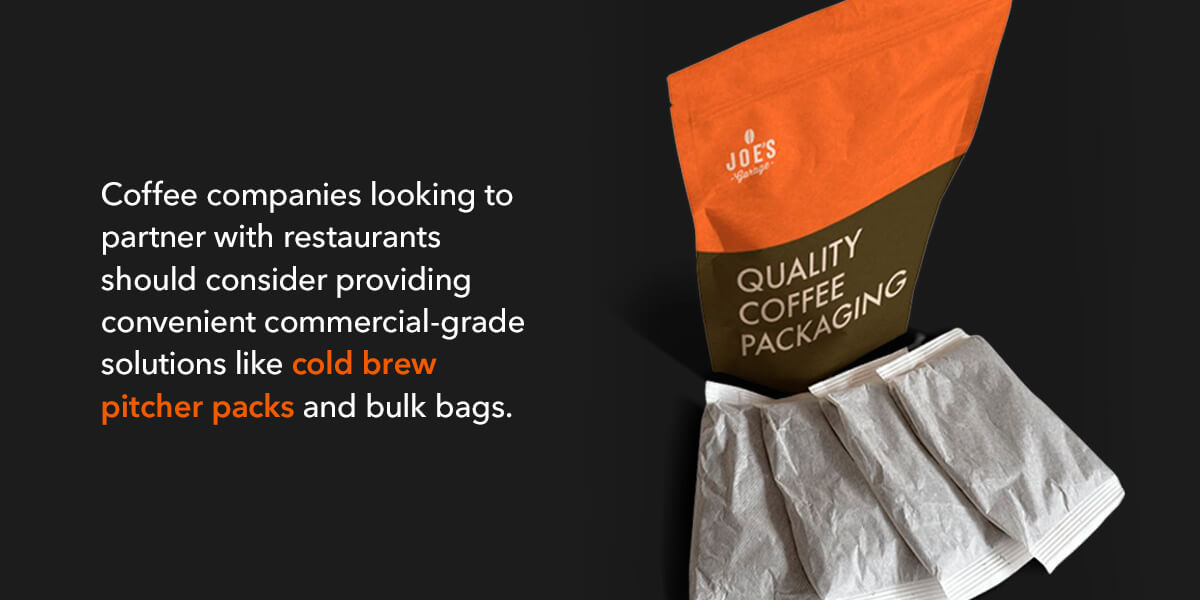
Restaurants
Customers today expect a more convenient, personalized and experience-driven dining experience than they did in previous years.
Offering high-quality coffee after a meal helps servers upsell checks and encourage repeat business. Many restaurants and bars incorporate espresso and cold brew into their menus by adding it to desserts and mixed drinks.
Coffee companies looking to partner with restaurants should consider providing convenient commercial-grade solutions like cold brew pitcher packs and bulk bags. Restaurant workers can easily incorporate these products into their workflow and bring in better revenue.
Hotels and Hospitality
People want premium experiences when they travel — including their morning cup of joe — and they’re willing to spend more for it. Partnering with hotels or other hospitality services can help coffee brands secure lasting revenue streams.
One-cup filter pods or single-serve coffee machines, like Nespresso and Keurig, are now commonplace in many hotel rooms. Some hotels have also installed lobby nooks and cafes to encourage guests to relax over their favorite caffeinated beverage.
Office Coffee Service
Post-pandemic, companies increasingly see the office as a collaborative space — as a result, more offices create spaces that facilitate togetherness. Office coffee service (OCS) is one of the many amenities they turn to for these spaces, and it’s becoming quite popular in the U.S. Experts predict the American OCS market to grow to $4.4 billion by 2026. That’s 24% growth every year.
Many offices install self-service OCS machines that let users pour their own custom coffee or tea beverages. Some even set up mini cafes for a higher-end experience.
Retail and E-Commerce
Experts predict that the online direct-to-consumer (D2C) coffee market will grow at a compound annual growth rate (CAGR) of 15.3% from 2022 through 2027.
The convenience of subscription coffee services is one driver of this growth. Coffee subscription services soared in popularity during the pandemic, and they’re still going strong with no signs of slowing. Take advantage of this hot trend by encouraging customers to sign up for a monthly or weekly shipment of their favorite blends. Add value by offering extras like brewing equipment, accessories, and apparel.
How to Keep Up With Coffee Industry Trends

From its beginnings in the Ethiopian highlands, coffee has become one of the most heavily traded commodities in the world. Across the globe, coffee shops dot the corners of city streets, and coffee roasting and brewing have become expressions of both artful craftsmanship and scientific precision.
But coffee’s meteoric rise has meant the industry experiences frequent and rapid changes. Every few years, a new trend shifts the direction, look, and tone of coffee production and brewing. If a company can’t stay on top of the trends, it could get left behind.
Trends don’t have to be overwhelming. Ultimately, a continually evolving industry signals innovation, creativity and a market that is continuing to grow. It doesn’t have to be challenging to keep up with coffee movements, either — it’s more than possible to recognize trends as they develop and to adapt your brand accordingly.
To tap into new markets and keep your customers coming back, your company must stay current with coffee industry trends. We’ve compiled this coffee industry overview to help you navigate a shifting marketplace and create a brand that resonates with customers.
How Do Coffee Industry Trends Develop?
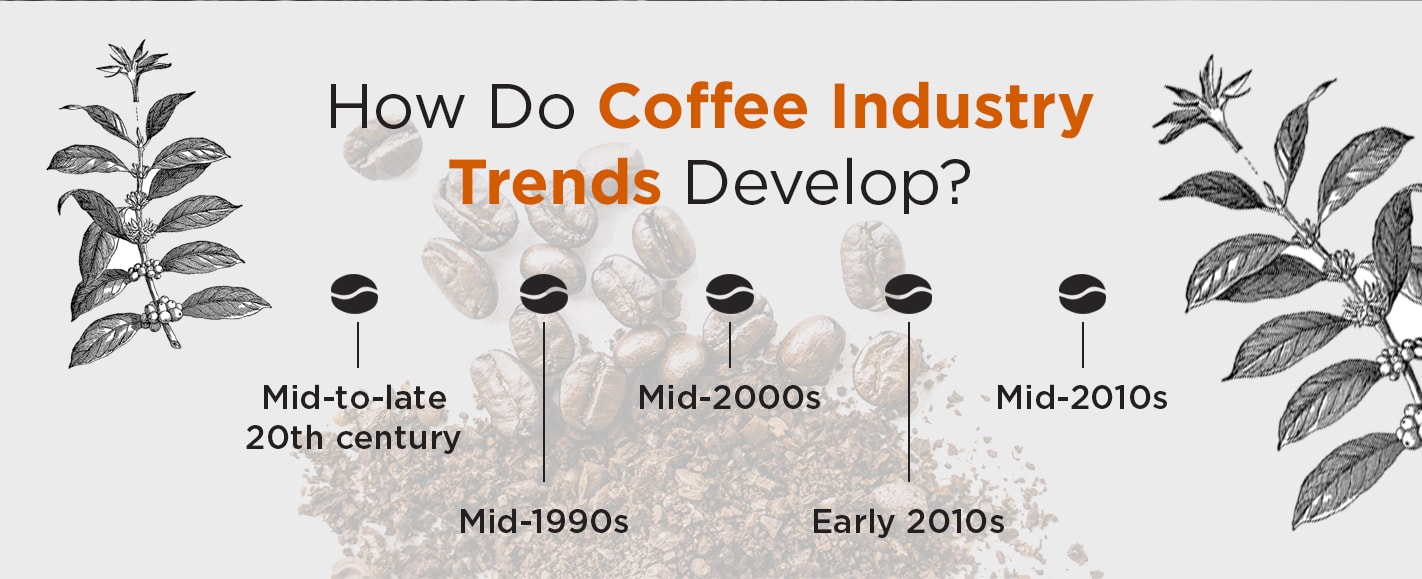
In many ways, coffee trends are the same as any other industry — they reflect the mindset and preferences of the culture they serve. As local and global cultures shift, so do their industries.
Large, global industries experience even more cultural change. Because coffee is an international market, an enormous number of cultural and economic elements each affect it, contributing to the rise of new trends.
Coffee trends tend to develop in waves. As one sweeps the market, another follows closely on its tail, building on the previous trend. They are interconnected, and if you watch the waves, you will see a cultural story unfold. According to World Coffee Portal, five major trends have washed over the coffee industry in the past century.
- Mid-to-late 20th century.Traditional coffee culture was the first coffee trend in the United States. The hallmarks of this movement included commodity-driven products and the introduction of instant coffee, and the defining marketing theme was functionality — customers were most interested in coffee because it refueled them.
- Mid-1990s.Branded chains began to appear in the mid-1990s, and they marked the proliferation of coffee shop culture across America. This trend emphasized the enjoyment of coffee and the associated coffee-shop lifestyle, and customized espresso-based beverages were the product of choice. During this wave, coffee became a truly globalized industry.
- Mid-2000s.During the mid-2000s, artisan coffee surged into the spotlight. Consumer focus was on coffee’s craft and quality, and marketing efforts centered on culinary appreciation and sourcing transparency.
- Early 2010s.Riding the wave of artisan coffee, the defining trend of the early 2010s was the science of coffee. Customers became fascinated by the precision and science behind good coffee, and custom, in-house roasting surged in popularity.
- Mid-2010s.The latest trend in the industry is the business of coffee. Boutique chains began to deliver higher standards of professionalism, and the environment of the coffee shop shifted in response. Curating the coffee shop aesthetic grew into a scientific artfulness, and coffee producers were all about hyper-professionalism, an investment in technology and a commitment to operational excellence.
When researching industry movements, it’s important to note not all fads become trends.
A fad has no real power over industry direction — they are products or ideas that spark brief consumer interest. While they may have some short-term influence, fads fade out of consumer consciousness before they can cause true change.
Alternately, a trend signals a general direction in which an industry or market is moving — they indicate a permanent shift. continually can influence local, regional, national, or international markets, and they could last for a few months or stick around for years. While not all trends last for long, they build on each other. Even a short-lived trend is influential in the direction of an industry.
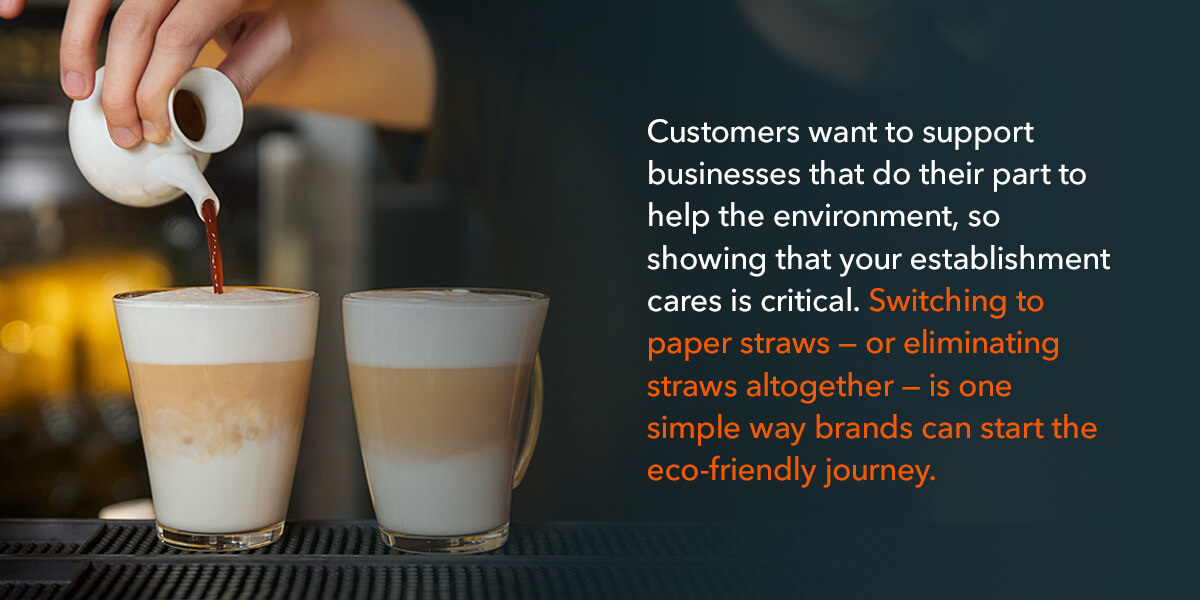
The Future of the Coffee Industry
Sustainability will be the biggest issue moving forward. Environmental, social, and governance (ESG) initiatives matter more to customers now than ever before. According to data collected by NielsenIQ, products that used ESG-related claims saw 1.7% higher market growth from 2018 to 2022 than products that did not.
Meeting ESG requirements will also be crucial for selling in certain markets. The European Green Deal, for example, bans anything produced on deforested land. Coffee producers must prove their crops come from deforestation-free land if they want to sell in the European Union (EU).
Environmental concerns affect more than sales. Many predict that coffee may soon become a luxury if companies and customers don’t take swift action. Coffee companies will need to create strategies for navigating the climate crisis.
Experts also predict coffee bean farming will move away from the tropics as the planet warms. For example, while Brazil is currently the world’s top coffee producer, it’s likely to become less suitable for growing coffee over the next 30 years. However, Argentina, Uruguay, and the U.S. are predicted to become more suitable areas for growing coffee.
This shift toward sustainability is also likely to hit coffee shops and cafes. Customers want to support businesses that do their part to help the environment, so showing that your establishment cares is critical. Switching to paper straws — or eliminating straws altogether — is one simple way brands can start this eco-friendly journey.
How to Stay Ahead of Coffee Industry Trends

The coffee industry is constantly evolving. To remain relevant, you have to understand and stay ahead of the market trends.
Keeping up with every industry movement may seem overwhelming or even impossible — how does a company stay relevant in a shifting industry?
Ultimately, staying abreast of coffee trends is as simple as keeping your eyes open. By paying attention to your industry, you will begin to notice emerging consumer preferences and needs. Below, we’ve listed six ways to stay informed and educated about the coffee industry, so you can see and act on any burgeoning trends as soon as they appear.
1. Subscribe to Industry Magazines and Blogs
One of the best ways to stay current with coffee news is to subscribe to industry blogs and magazines.
Authoritative, industry-leading publications are full of expert voices and opinions. These sources should make up the majority of your research — industry blogs and magazines feature a wide range of articles, including information on the craft of coffee production, along with consumer trends.
Industry publications have an intimate knowledge of the product and the market. Pay close attention to any articles that mention an emerging consumer preference or producer initiative, and encourage your staff to read them as well.
2. Explore Social Media
Social media is more than a way to promote your business. Strategic use of social media platforms can provide valuable clues into current consumer trends.
Every few weeks or couple of months, check out the trending hashtags and topics related to the coffee industry — you might catch a new trend as it emerges, and familiarizing yourself with social media movements helps you pinpoint what customers are looking for in a coffee product.
If you’re interested in specific demographics, it can help to be selective with the social media platforms you monitor. For example, although Generation Z is extremely active on TikTok and Instagram, they’re less active on Twitter.
3. Familiarize Yourself With Industry Reports and Market Research
Industry organizations such as the National Coffee Association invest time, money, and manpower into market research and reports.
For official, research-based resources on the projected growth and trends of the coffee industry, familiarize yourself with these industry-leading organizations. While other sources can provide anecdotal evidence of trends and movements, official coffee organizations can give you hard numbers and statistics.
Through official industry reports and research, you can see where the market is headed and adapt your business plan accordingly.
4. Track Data From Your Shop or Website
To see where your customers are landing and what they are buying, check any data you can access from your website or physical business records.
If you have a company website, invest in analytics software that provides detailed information about the visitors to your site — what pages they visit, how long they stay there, what products they look at, etc. It will help you pinpoint what draws customers to your business, and it allows you to know what products to push or information to provide on your site.
Also, check the sales information from your shop. Look for any themes — what products are increasing, and which ones are declining in sales or popularity? This knowledge will give you concrete insight into the current consumer and market trends.
5. Talk to Your Customers
One of the best ways to track trends is also one of the most straightforward — talk to your customers.
To monitor coffee trends, interact with your customer base. Design in-store or online polls to determine what matters to your customers and what they are currently looking for in their coffee brand.
While you don’t have to change your business model based on a few customers’ opinions, keep a record of their responses. Over time, you will probably notice trends in the data — what they like, what they don’t like, and what they are looking for. Use this long-term information to help shape the direction of your company’s brand, marketing, and products.
6. Check With Your Employees
Your staff is another valuable resource into consumer trends and preferences.
Most likely, your employees have more direct contact with your customer base than you do. They handle more questions from customers, and they regularly engage with your clients. Because of their frequent contact with customers, your employees could provide insight into customer patterns and how they have changed.
The Best Sources For Coffee Trends and Coffee Industry News
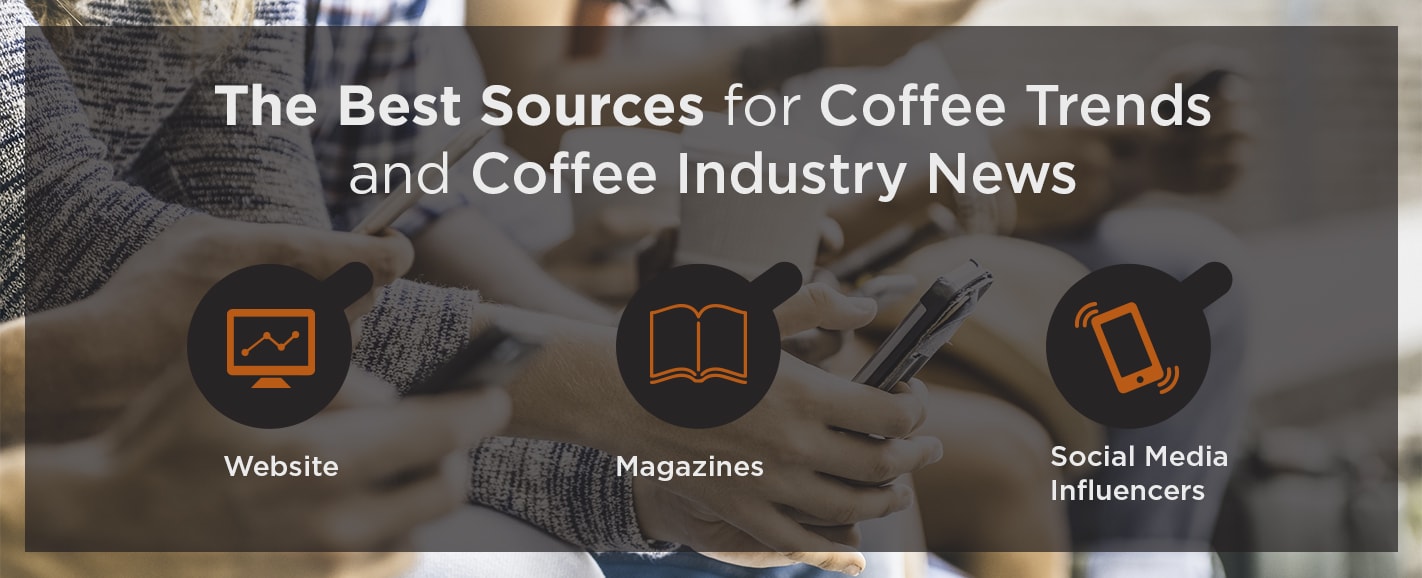
The amount of coffee-trend sources can be overwhelming. Should you subscribe to an industry magazine, browse coffee blogs, or follow social media influencers?
To make it easier, we’ve grouped some of the top industry resources into three categories. Keep in mind that this is just an overview of the available resources. There are dozens of high-quality publications and sources — the following list is only a starting point.
1. Websites
A quick Google search will reveal hundreds of different coffee websites to look through. While there are many fantastic coffee websites to choose from, here are four of the best sources to begin your research.
- Perfect Daily Grind.The Perfect Daily Grind is a site dedicated to the education of its readers. It provides articles and information on coffee farming, roasting, and brewing, giving the reader valuable insight into current trends across all aspects of the industry.
- The Coffee Compass. This site features news and articles by coffee professionals. The Coffee Compass also covers many local and regional coffee markets, providing information into local as well as global movements.
- CoffeeGeek.If you are looking for the latest news about industry technology, CoffeeGeek is the perfect resource. It regularly publishes articles reviewing the newest coffee equipment and technology, helping you keep on top of the latest trends in innovation.
- The Sprudge.For the latest news about international coffee trends, The Sprudge is a fantastic resource. From coffee roasters in Brazil to businesses in New York, Sprudge helps your company maintain a global perspective about the coffee industry.
2. Magazines
You don’t have to subscribe to a magazine to enjoy its content — most modern magazines also maintain excellent websites. Check out these top industry magazines to stay on top of the latest movements within the world of coffee.
- Roast.A bi-monthly, technical trade magazine, Roastcovers the business, science, and craft of coffee, so you can stay up to date in all areas of the industry. Roast also runs a website called Daily Coffee News, which is another excellent source for high-quality coffee information.
- Barista. While aimed at coffee shops and baristas, Baristamagazine is also useful for coffee roasters and producers. The content often focuses on emerging consumer trends, which can help inform your business and direct your marketing campaigns.
- Coffee Talk. Coffee Talk provides fair and objective editorial content filled with information about the latest events, technology, and trends in coffee. With new content published daily on their online site, Coffee Talk particularly highlights the evolving coffee culture.
3. Social Media Influencers
The ranking and followings of social media influencers are constantly changing. To find top influencers in the coffee industry, search social media sites such as LinkedIn, Instagram, and Facebook using keywords like “coffee,” “roasting,” or “brewing.”
Take note of any connecting themes that thread through the results — do the influencers seem to be promoting fair trade and sustainable beans, or are they more interested in packaging aesthetics? Influencers are quick to commercialize on any movements in an industry. By keeping tabs on social media’s elite, you can catch new coffee and consumer trends before they sweep into the marketplace.
Discover More Coffee Industry Trends on Our Blog
If you’re interested in learning more about new coffee trends and tips for becoming a successful coffee brand, check out our other useful resources. Learn how to keep up with these coffee industry trends or explore products coffee brands should consider selling.
With over 20 years of experience, Joe’s Garage Coffee has manufactured hundreds of millions of products to help our customers meet the trends and demands of the coffee and tea industry. It’s safe to say we know coffee, and we’d love to pass that knowledge and experience on to you. Whether you could benefit from our products and services or you just want to learn more about the coffee industry, we’re here to help.
Check out our blog today to discover more about the coffee industry and its trends or browse our coffee selections today.




